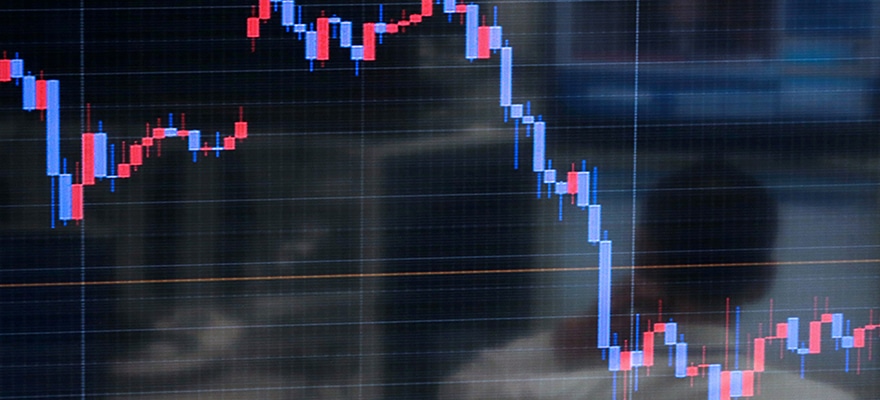Trader and author Raghee Horner of IBFX, talks about how difficult it can be when basing your trading mainly upon Support and Resistance. I do agree with her, even though having said that, I still maintain Support and Resistance trading is probably the most effective form of trading when done right, since your risk reward proportion can be absolutely fabulous.
Raghee says, "Entry styles that require support or resistance to hold at a certain price level can be a nerve-wracking trade. The idea that the market will hold at a level that analysis has shown to be important does require a certain understanding of current Volatility
Volatility
In finance, volatility refers to the amount of change in the rate of a financial instrument, such as commodities, currencies, or stocks, over a given time period. Essentially, volatility describes the nature of an instrument’s fluctuation; a highly volatile security equates to large fluctuations in price, and a low volatile security equates to timid fluctuations in price. Volatility is an important statistical indicator used by financial traders to assist them in developing trading systems. Trad
In finance, volatility refers to the amount of change in the rate of a financial instrument, such as commodities, currencies, or stocks, over a given time period. Essentially, volatility describes the nature of an instrument’s fluctuation; a highly volatile security equates to large fluctuations in price, and a low volatile security equates to timid fluctuations in price. Volatility is an important statistical indicator used by financial traders to assist them in developing trading systems. Trad
Read this Term and the current momentum behind the market’s movement."
Ok, so we're back to volatility and momentum again, Which is why Raghee brings us to Isaac himself, as we know Newton's laws of motion are three physical laws that form the basis for classical mechanics. They have been expressed in several different ways over nearly three centuries, but can basically be summarised as follows:
1. In the absence of a net force, the center of mass of a body either is at rest or moves at a constant velocity.
2. A body experiencing a force F experiences an acceleration a related to F by F = ma, where m is the mass of the body. Alternatively, force is equal to the time derivative of momentum.
3. Whenever a first body exerts a force F on a second body, the second body exerts a force −F on the first body. F and −F are equal in magnitude and opposite in direction.
Alright, so what does this all have to do with making some pips in the Forex
Forex
Foreign exchange or forex is the act of converting one nation’s currency into another nation’s currency (that possesses a different currency); for example, the converting of British Pounds into US Dollars, and vice versa. The exchange of currencies can be done over a physical counter, such as at a Bureau de Change, or over the internet via broker platforms, where currency speculation takes place, known as forex trading.The foreign exchange market, by its very nature, is the world’s largest tradi
Foreign exchange or forex is the act of converting one nation’s currency into another nation’s currency (that possesses a different currency); for example, the converting of British Pounds into US Dollars, and vice versa. The exchange of currencies can be done over a physical counter, such as at a Bureau de Change, or over the internet via broker platforms, where currency speculation takes place, known as forex trading.The foreign exchange market, by its very nature, is the world’s largest tradi
Read this Term market? Well, whenever there is momentum, then in order to reverse that effect, you're going to encounter inertia. And whenever there is greater inertia, there's a possibility, combined with previous support and resistance, of potential trade reversal, i.e. potential entry point.
Raghee continues, "I think about this each time I enter a trade where there may be a support (or resistance level) I am watching that could hold. Of course there’s no guarantee that it will hold and there are trends on other time frames that could affect whether it does. So it’s important that I consider the “motion” which for us traders is the trend, on other time frames using my 34EMA Wave. Let’s look at a current example on the EUR/JPY."
For further insight from Raghee, head over to:
https://www.ibfx.com/Corporate/post/2010/04/07/A-Closer-Look-at-Entry-Timing-EURJPY.aspx
Looking closer at EUR/JPY Entry Timing
Trader and author Raghee Horner of IBFX, talks about how difficult it can be when basing your trading mainly upon Support and Resistance. I do agree with her, even though having said that, I still maintain Support and Resistance trading is probably the most effective form of trading when done right, since your risk reward proportion can be absolutely fabulous.
Raghee says, "Entry styles that require support or resistance to hold at a certain price level can be a nerve-wracking trade. The idea that the market will hold at a level that analysis has shown to be important does require a certain understanding of current volatility and the current momentum behind the market’s movement."
Ok, so we're back to volatility and momentum again, Which is why Raghee brings us to Isaac himself, as we know Newton's laws of motion are three physical laws that form the basis for classical mechanics. They have been expressed in several different ways over nearly three centuries, but can basically be summarised as follows:
1. In the absence of a net force, the center of mass of a body either is at rest or moves at a constant velocity.
2. A body experiencing a force F experiences an acceleration a related to F by F = ma, where m is the mass of the body. Alternatively, force is equal to the time derivative of momentum.
3. Whenever a first body exerts a force F on a second body, the second body exerts a force −F on the first body. F and −F are equal in magnitude and opposite in direction.
Alright, so what does this all have to do with making some pips in the forex market? Well, whenever there is momentum, then in order to reverse that effect, you're going to encounter inertia. And whenever there is greater inertia, there's a possibility, combined with previous support and resistance, of potential trade reversal, i.e. potential entry point.
Raghee continues, "I think about this each time I enter a trade where there may be a support (or resistance level) I am watching that could hold. Of course there’s no guarantee that it will hold and there are trends on other time frames that could affect whether it does. So it’s important that I consider the “motion” which for us traders is the trend, on other time frames using my 34EMA Wave. Let’s look at a current example on the EUR/JPY.
For further insight from Raghee, head over to:
https://www.ibfx.com/Corporate/post/2010/04/07/A-Closer-Look-at-Entry-Timing-EURJPY.aspx
Trader and author Raghee Horner of IBFX, talks about how difficult it can be when basing your trading mainly upon Support and Resistance. I do agree with her, even though having said that, I still maintain Support and Resistance trading is probably the most effective form of trading when done right, since your risk reward proportion can be absolutely fabulous.
Raghee says, "Entry styles that require support or resistance to hold at a certain price level can be a nerve-wracking trade. The idea that the market will hold at a level that analysis has shown to be important does require a certain understanding of current Volatility
Volatility
In finance, volatility refers to the amount of change in the rate of a financial instrument, such as commodities, currencies, or stocks, over a given time period. Essentially, volatility describes the nature of an instrument’s fluctuation; a highly volatile security equates to large fluctuations in price, and a low volatile security equates to timid fluctuations in price. Volatility is an important statistical indicator used by financial traders to assist them in developing trading systems. Trad
In finance, volatility refers to the amount of change in the rate of a financial instrument, such as commodities, currencies, or stocks, over a given time period. Essentially, volatility describes the nature of an instrument’s fluctuation; a highly volatile security equates to large fluctuations in price, and a low volatile security equates to timid fluctuations in price. Volatility is an important statistical indicator used by financial traders to assist them in developing trading systems. Trad
Read this Term and the current momentum behind the market’s movement."
Ok, so we're back to volatility and momentum again, Which is why Raghee brings us to Isaac himself, as we know Newton's laws of motion are three physical laws that form the basis for classical mechanics. They have been expressed in several different ways over nearly three centuries, but can basically be summarised as follows:
1. In the absence of a net force, the center of mass of a body either is at rest or moves at a constant velocity.
2. A body experiencing a force F experiences an acceleration a related to F by F = ma, where m is the mass of the body. Alternatively, force is equal to the time derivative of momentum.
3. Whenever a first body exerts a force F on a second body, the second body exerts a force −F on the first body. F and −F are equal in magnitude and opposite in direction.
Alright, so what does this all have to do with making some pips in the Forex
Forex
Foreign exchange or forex is the act of converting one nation’s currency into another nation’s currency (that possesses a different currency); for example, the converting of British Pounds into US Dollars, and vice versa. The exchange of currencies can be done over a physical counter, such as at a Bureau de Change, or over the internet via broker platforms, where currency speculation takes place, known as forex trading.The foreign exchange market, by its very nature, is the world’s largest tradi
Foreign exchange or forex is the act of converting one nation’s currency into another nation’s currency (that possesses a different currency); for example, the converting of British Pounds into US Dollars, and vice versa. The exchange of currencies can be done over a physical counter, such as at a Bureau de Change, or over the internet via broker platforms, where currency speculation takes place, known as forex trading.The foreign exchange market, by its very nature, is the world’s largest tradi
Read this Term market? Well, whenever there is momentum, then in order to reverse that effect, you're going to encounter inertia. And whenever there is greater inertia, there's a possibility, combined with previous support and resistance, of potential trade reversal, i.e. potential entry point.
Raghee continues, "I think about this each time I enter a trade where there may be a support (or resistance level) I am watching that could hold. Of course there’s no guarantee that it will hold and there are trends on other time frames that could affect whether it does. So it’s important that I consider the “motion” which for us traders is the trend, on other time frames using my 34EMA Wave. Let’s look at a current example on the EUR/JPY."
For further insight from Raghee, head over to:
https://www.ibfx.com/Corporate/post/2010/04/07/A-Closer-Look-at-Entry-Timing-EURJPY.aspx
Looking closer at EUR/JPY Entry Timing
Trader and author Raghee Horner of IBFX, talks about how difficult it can be when basing your trading mainly upon Support and Resistance. I do agree with her, even though having said that, I still maintain Support and Resistance trading is probably the most effective form of trading when done right, since your risk reward proportion can be absolutely fabulous.
Raghee says, "Entry styles that require support or resistance to hold at a certain price level can be a nerve-wracking trade. The idea that the market will hold at a level that analysis has shown to be important does require a certain understanding of current volatility and the current momentum behind the market’s movement."
Ok, so we're back to volatility and momentum again, Which is why Raghee brings us to Isaac himself, as we know Newton's laws of motion are three physical laws that form the basis for classical mechanics. They have been expressed in several different ways over nearly three centuries, but can basically be summarised as follows:
1. In the absence of a net force, the center of mass of a body either is at rest or moves at a constant velocity.
2. A body experiencing a force F experiences an acceleration a related to F by F = ma, where m is the mass of the body. Alternatively, force is equal to the time derivative of momentum.
3. Whenever a first body exerts a force F on a second body, the second body exerts a force −F on the first body. F and −F are equal in magnitude and opposite in direction.
Alright, so what does this all have to do with making some pips in the forex market? Well, whenever there is momentum, then in order to reverse that effect, you're going to encounter inertia. And whenever there is greater inertia, there's a possibility, combined with previous support and resistance, of potential trade reversal, i.e. potential entry point.
Raghee continues, "I think about this each time I enter a trade where there may be a support (or resistance level) I am watching that could hold. Of course there’s no guarantee that it will hold and there are trends on other time frames that could affect whether it does. So it’s important that I consider the “motion” which for us traders is the trend, on other time frames using my 34EMA Wave. Let’s look at a current example on the EUR/JPY.
For further insight from Raghee, head over to:
https://www.ibfx.com/Corporate/post/2010/04/07/A-Closer-Look-at-Entry-Timing-EURJPY.aspx






















